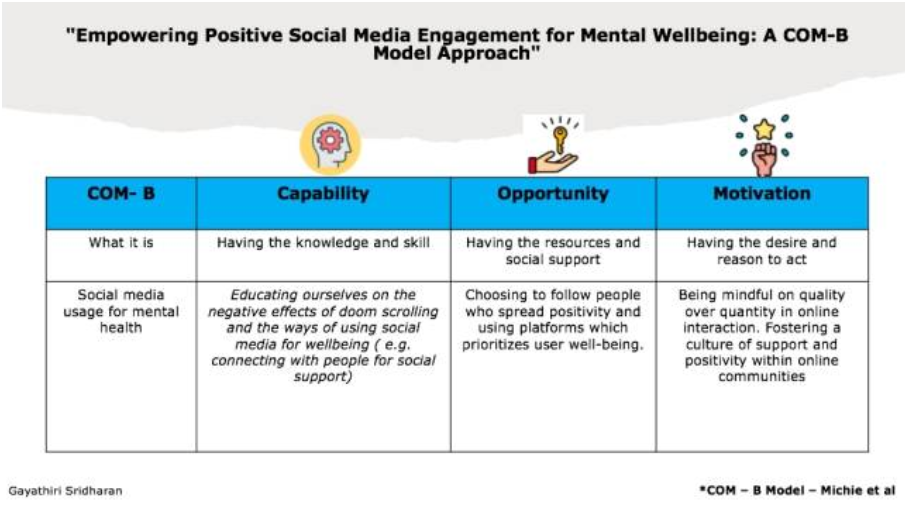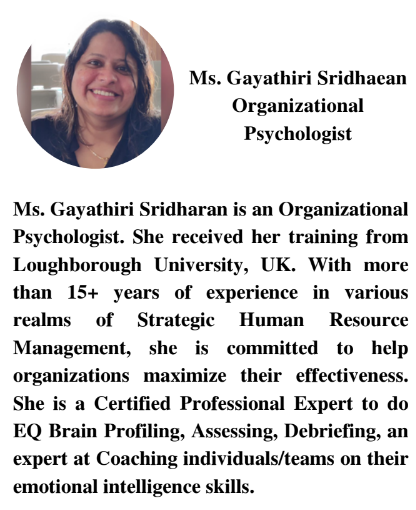As I repeatedly encountered negative portrayals of social media that it affects our mental health in research papers and in my favourite magazines, I couldn’t help but wonder if there was more to the story. My curiosity piqued, prompting me to delve deeper into the subject. They say “curiosity kills the cat,” but this time, my inquisitiveness led me down a path of enlightening research findings that challenged my previous beliefs about social media’s negative impacts.
It was a transformative experience that shattered my old mindset and revealed social media does support human flourishing i.e. social media does have the potential to foster positive interactions and promote mental wellness. Curious to discover, allow me to elucidate how social media is utilized by various demographics to enhance their mental well-being. Before we delve into the details, let’s first clarify the concept of social media. According to European researchers3 Andreas Kaplan and Michael Haenlein, social media encompasses “a group of Internet-based applications that facilitate the creation and exchange of user-generated content within virtual communities.”
This definition encompasses popular platforms like Facebook, LinkedIn, Twitter, Instagram, YouTube, TikTok, Snapchat, and Pinterest. In a recent systematic review, researchers examined 118 studies spanning across 7 social media platforms, involving over 50,000 participants from 26 different countries. The aim was to explore how social media can contribute to human flourishing. The study identified two main categories within the flourishing framework: social support & identity.
Social support : Social support holds significant importance in life, influencing both physical and psychological well-being. According to German Neubaum and his colleagues researchers7, social media has been found to elicit short-term positive emotions. Contrary to common belief, these positive emotions are not limited to younger generations. It’s worth noting that social media now provides social support to older adults as well, not just to youth and adolescents. There are two extensive systematic reviews, one focused on breast cancer patientsl and the other examining overall health, mental illness, and well-being , concluded that social media can offer genuine comfort and companionship to individuals coping with physical and mental illnesses.
Identity: Many individuals utilize social media for their professional growth. Based on a systematic review of 17 studies, researchers4 discovered that social media plays a crucial role in constructing professional identity. They elucidated how social media enables individuals to proactively design and shape their professional identities. The most significant factor influencing online well-being is found to be the extent to which individuals engage in comparisons with others. Typically, two types of social comparisons occur on social media platforms: comparing one’s opinions with those of others (opinion-based comparison) and comparing one’s abilities.
Researchers discovered that engaging in opinionbased comparison via social media can indeed enhance well-being and foster feelings of optimism and inspiration. Given our comprehension of the potential for social media to enhance human flourishing, would you like to explore strategies for harnessing its benefits without succumbing to its control? In 2011, Michie and his colleagues devised a framework called the capability, opportunity, motivation and behaviour (COM-B) model to help in bringing change in our behaviour.
The COM-B model of behaviour change suggests that to engage in a behaviour (B), a person needs to have the capability (C), opportunity (O) and motivation (M) to perform that behaviour, so any behaviour change will require modifying at least one of those components. capability refers to a person’s psychological and physical ability to engage in a behaviour. Psychological capability includes having the necessary knowledge to perform a behaviour but also the necessary mental skills, such as attention, memory or decision-making skills. In this context, our psychological capability entails possessing the essential knowledge for utilizing social media, not only for purposes of social support and identity creation but also to avoid engaging in detrimental behaviors like ‘doom scrolling,’ which involves mindlessly consuming negative news on social media for extended periods.
Opportunity refers to the external factorsphysical and social – that enable the behaviour. Physical opportunity refers to the environment where the behaviour takes place, but also to physical resources such as money or time. Social opportunity involves the behaviour of significant others and of our broader social networks. Carefully selecting whom we follow on social media platforms can significantly impact outcomes. Social media algorithms are designed to suggest content and connections based on our viewing history.
Therefore, instead of passively following accounts, actively choosing individuals who promote positivity creates an opportunity for beneficial interactions. For instance, I follow figures like Adam Grant on LinkedIn (https://www.linkedin.com/in/adammgrant/) and Andrew Huberman on Instagram (https://www.instagram.com/hubermanlab/), and the platforms often recommend similar uplifting personalities.)
Motivation involves all the internal processes The following diagram depicts how the COM-B that trigger or inhibit a behaviour, and that model can improve our social media usage for ultimately result in us performing a particular mental wellbeing. behaviour instead of any other possible competing behaviour. These processes can be reflective, involving plans, beliefs, attitudes, or goals, and automatic, involving emotions and habits that may not enter conscious awareness.
Given that social media platforms are primarily designed for profit-making, adopting a mindful approach-setting clear goals and plans for using social media to enhance our well-beingcan prevent us from succumbing to negative habits like doom scrolling. The following diagram depicts how the COM-B model can improve our social media usage for mental wellbeing.

References
- Falisi, A. L., Wiseman, K. P., Gaysynsky, A., Scheideler, J. K., Ramin, D. A., & Chou, W. S. (2017). Social media for breast cancer survivors: a literature review. Journal of cancer survivorship : research and practice, 11(6), 808-821. https://doi.org/10.1007/s11764-017-0620-5 • Gilmour, J., Machin, T., Brownlow, C., & Jeffries, C. (2020). Facebook-based social support and health: A systematic review. Psychology of popular media, 9(3), 328.
- Kaplan, A. M., & Haenlein, M. (2010). Users of the world, unite! The challenges and opportunities of Social Media. Business horizons, 53(1), 59-68.
- Kasperiuniene, J., & Zydziunaite, V. (2019). A Systematic Literature Review on Professional Identity Construction in Social Media. Sage Open, 9(1). https://doi.org/10.1177/2158244019828847
- Maya Gudka, Kirsty L. K. Gardiner & Tim Lomas (2023) Towards a framework for flourishing through social media: a systematic review of 118 research studies, The Journal of Positive Psychology, 18:1, 86- 105, DOI: 10.1080/17439760.2021.1991447
- Michie, S., Van Stralen, M. M., & West, R. (2011). The behaviour change wheel: a new method for characterising and designing behaviour change interventions. Implementation science, 6, 1-12.
- Neubaum, G., Rösner, L., Rosenthal-von der Pütten, A. M., & Krämer, N. C. (2014). Psychosocial functions of social media usage in a disaster situation: A multi-methodological approach. Computers in Human Behavior, 34, 28-38.
- Park, S. Y., & Baek, Y. M. (2018). Two faces of social comparison on Facebook: The interplay between social comparison orientation, emotions, and psychological well-being. Computers in Human Behavior, 79, 83- 93. https://doi.org/10.1016/j.chb.2017.10.028
- Zhou, Z., Zhang, S., Kim, Y. K., Birditt, K. S., & Fingerman, K. L. (2024). Need to belong, daily social engagement, and transient loneliness in late life. Journal of Social and Personal Relationships, 41(1), 115- 136. https://doi.org/10.1177/02654075231211617
About the Author


